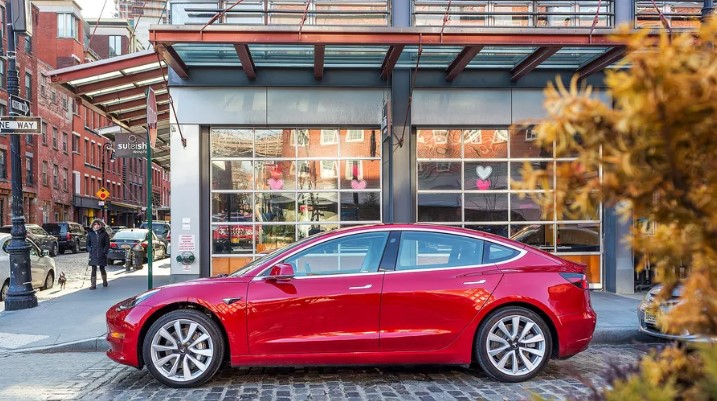
Tesla’s chief vehicle engineer Doug Field left the company last week, according to a filing with the SEC. Field had been on a leave of absence since May. The news, which was first reported by the Wall Street Journal, came on the same day that Tesla announced it barely met CEO Elon Musk’s goal of making 5,000 Model 3 sedans in the final week of the second financial quarter of 2018.
“Tesla would like to thank Doug for his hard work over the years and for everything he has done for Tesla,” the company said in its SEC filing. His last day was June 27, according to the announcement.
Field is one of dozens of executives who have left the company over the last few years. But he was a high profile presence at Tesla. He was hired away from Apple, where he had most recently served as the vice president of Mac hardware engineering. He also spent a number of years working for Segway and Ford.
At Tesla, Field was in charge of the company’s vehicle programs. This past March, when worry about the company’s ability to increase production of the Model 3 was at a fever pitch, Field sent out a company-wide email imploring Tesla employees to “prove a bunch of haters wrong.”
Tesla missed the goal that Musk had set for the first quarter, though, and shortly after that, the CEO reportedly pushed Field aside and took over Model 3 production. A Tesla spokesperson said at the time that “Elon is focusing his time there while Doug focuses on vehicle engineering.” Musk tweeted that Field was “one of the world’s most talented engineering execs,” but that the CEO was trying to “divide & conquer.” But weeks later, Field took a leave of absence to “recharge and spend time with his family,” according to the company.
Shortly after Field’s departure was announced Monday, Bloomberg reported that Tesla will a take a short break from making the Model 3 this week, with production picking back up on Thursday. The break “won’t impact production targets and will allow the company to do basic upkeep and maintenance work,” the sources told Bloomberg.
Now that Tesla has reached its self-prescribed goal of making 5,000 Model 3s in (just about) one week, the question remains: can the company can sustain that pace? Tesla is known for pushing out bursts of production at the end of quarters to meet goals and increase its reportable numbers, though the company said Monday that it expects to reach 6,000 per week by “late next month.”
“One week of achieving a production milestone is just the beginning,” Michelle Krebs, executive analyst at Autotrader, said in a statement about the Model 3 news. “Tesla’s task going forward will be to routinely and consistently meet production targets and quality.”
Tesla reportedly hit its goal for Model 3 production hours after the quarter technically ended. It made 28,578 of them total in the second quarter, marking the first time Model 3 production eclipsed the total number of Model S and X vehicles made in a quarter. But Tesla only delivered 18,440 Model 3s in Q2. More than 10,000 Model 3s are still “in transit,” which includes cars that are finished but sitting in parking lots that are rented by Tesla. Tesla says the reason for this is because of the late increase in production at the end of the quarter.
To reach its goal, production of the Model 3 was done around the clock, and the company built an unconventional outdoor vehicle assembly line underneath a giant tent. The company said Monday that about 20 percent of the 5,031 cars made in the final week of the second quarter came from that outdoor line, and that it expects to keep using it to reach higher levels of production going forward. (As of now, the tent is permitted for six months.)
Tesla needs to keep production churning in order to make a profit on the Model 3. But the demand is there. The company said Monday that the line of preorders remains about 420,000 people long, and that it expects orders to grow “faster than our production rate” as more Model 3s make their way to the company’s stores.
One thing that remains unclear is whether Tesla passed a different kind of milestone at the end of this past quarter. The company has been approaching 200,000 cars sold in the US, and when it reaches that mark, an 18-month gradual phaseout of the $7,500 federal tax credit begins. Passing 200,000 cars sold in the US in the third quarter, as opposed to the second quarter, would mean the full tax credit would remain available to customers for an extra three months. When asked if Tesla surpassed that mark or not, a spokesperson for Tesla declined to comment.

